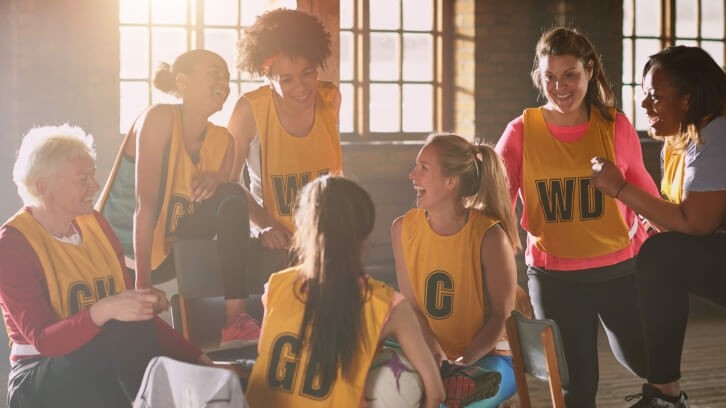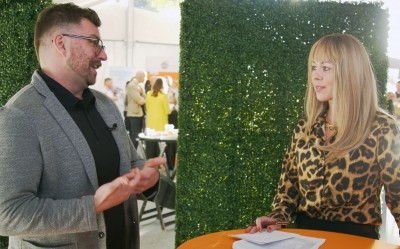Female fluctuations, cycles and stages key to sports nutrition market

While previously treated as small men who like pink packaging in what has been termed a “pink it and shrink it” approach, female supplement consumers are increasingly looking for data and deliverables that are tried and tested for women’s specific and shifting physiological needs as the research and the market work to catch up.
During a series of sessions on women’s health at the recent Sports and Active Nutrition Summit, speakers highlighted the need for health tracking technology, investment in female data to support claims, and translatable solutions that provide experiential results.
Syncing female needs
Hélène Guillaume, CEO and founder of tech company Wild.Ai, kicked off the sessions with a fireside chat about how she combined her competitive sports and data science background to create a mobile app built on research in women and input from wearable tech to inform data-driven decisions to sync female fueling needs for optimum performance.
“When we say women are not men, it sounds obvious, but it’s not,” she said. “Eighty percent of the research today is done in males, and when it comes to sports, it’s even more dramatic—only 6% of research is carried out in women.”
The reason for the historical exclusion of women from research is due to their hormonal fluctuations, which change day to day, cycle to cycle and life stage to life stage, but Guillaume noted that this does not mean that product developers should simply extrapolate data on men to women.
“We start to understand that our bodies are actually very different than men, so everything that we have learned so far pretty much is often incorrect when it comes to our nutritional needs,” she said. “It’s really important to flip the story and really empower women as well to appreciate their bodies. We really need to reframe what is a healthy female body.”
She added that in the age of AI and incredible computing powers, there is no reason whatsoever not to serve women at a granular level.
The state of the science
Katie Hirsh, assistant professor at the University of South Carolina, spoke to the growing interest and investment in women’s sports and presented the what is known and needed in terms of the budding and ongoing study of active women.
“If we look at the research, which is my world and what we do, we’re far, far behind, in how we best support these female athletes,” she said, adding that in the age of research, there is no excuse not to account for sex differences.
Hirsh did, however, note that there are opportunities to start applying current knowledge on how hormonal fluctuations and symptoms like pain, fatigue, water retention and mood affect performance while pushing the research forward to generate consistent female-specific data that “weeds out the noise” and hones in on appropriate dosing, loading, timing and combinations.
“These are things that ultimately we can be addressing through nutrition and supplementation,” she said. “We know there’s a lot of supplements out there that target body composition changes, energy and fatigue, mental health, physical performance—this isn’t a new concept all the way, but what we don’t know is how to best be educating women on how to use these things to target their symptoms, to support their performance.”
She highlighted research on the potential of creatine for anaerobic, high-powered, high-speed performance in women and studies supporting benefits of creatine and omega-3s for mental health; caffeine, teacrine and beta-alanine to alleviate fatigue and boost focus; nootropics for cognitive performance; protein and other supplements to promote better sleep; and strategies to address muscle loss as women age and athletes to recover from injury.
“As you are developing products, can we test them, can we include women in those studies, can we do it in women specifically?” Hirsch asked. “There’s a lot of value in that in and of itself. So, I would challenge all of you as you move forward with that to really think about who you’re testing these products on and who you’re marketing them to.”
Where art meets the science
Hirsch joined Susan Hazels Mitmesser, chief science officer at Pharmavite, and Rachel Jones, senior vice president, chief product innovation and science officer at GNC, for a panel discussion titled “Death to pink it and shrink it!”, which delved into the evolving understanding of the female consumer and her life stages.
Acknowledging the variability in women’s physiology and nutritional needs, panel participants agreed that data is needed—whether from female-specific clinical research, trackable and wearable technology, artificial intelligence or tools like organ-on-a-chip—to move the science forward and help women navigate the wide range of ingredients and products available to them.
“I think the solutions really lie within where the art meets the science and how you make it simple through education, through product development, through marketing, to really distil down based off of the day in the life of the different women who are shopping the industry,” Jones said. “What is it that they need, and how does it fit within their lifestyle in their day-to-day patterns?”
All panelists also agreed that getting women the nutritional interventions they need is a balancing act between giving knowledge-hungry consumers a deep dive on the data and communicating science that is digestible and translatable. Both Pharmavite and GNC noted that most female consumers prefer to read about products ahead of purchase and seek out female-focused communities online.
“Females are different than males, not only how something is metabolized in our body but also how we absorb information,” Mitmesser said. “So, we do a ton of testing with different concepts of messaging, so we know what that female in that target life stage understands and how we can get that message out to that consumer.”
Beyond the day-to-day, the panelists also spoke to underrepresented areas like fertility, pregnancy, post-partum, perimenopause and menopause as well as untapped opportunities like supporting women taking GLP-1 agonists like Ozempic to preserve lean muscle mass and energy levels on their weight-loss journeys.
“We have a long way to go,” Jones said. “Quite frankly, when I saw the ‘Death to pink and shrink it’ title, I'm not sure many brands and companies have truly figured this out.”
















